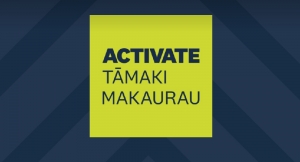Activate Tāmaki Makaurau – Business Advice and Implementation Grants
For many businesses in Auckland, it’s been a tough year. Navigating Level 4, Level 3, Level 3.1, Level 3.2, and Red have all had their own challenges and a move to Orange will have both rewards and challenges for businesses that have made it to this point.
The $60 million Government support package for Auckland businesses that was announced on 22 October 2021 is now open. There is $50 million available to fund advice and planning support for businesses and the implementation of that advice. A further $10 million is available for mental health and wellbeing support. In order to access this support, you will need to be registered with Activate Tāmaki Makaurau. This link will take you to the registration form: https://www.aucklandnz.com/activateauckland/activate-tamaki-makaurau-client
McDonald Vague is a registered service provider for Activate Tāmaki Makaurau in the following areas:
• Business Planning, Strategy and Continuity
• Financial Planning and Cashflow Management
• Business Hibernation or Exit
If you or your client think you would benefit from obtaining business advice from McDonald Vague in one or more of these areas, we are happy to work with you and/or your client to put together a bespoke business advice proposal that meets your client’s needs.
We have also developed two service offering under the Activate Tāmaki Makaurau business advice grant ($3,000 plus GST), which will be tailored to your client’s needs:
1. Crossroads
Undertaking a review of the business with the company’s owners, including reviewing the company’s cashflow and financial management, and undertaking a restructuring/turnaround assessment to determine whether the business should:
o Continue to trade – implement financial and cashflow management, business continuity planning, consider new opportunities and customer identification, operational improvements, and business coaching
o Restructure the business – implement financial and cashflow management, scale down/streamline operations, customer identification, and debt restructuring
o Wind down and close the business – implement liquidation planning and support
2. Road to Recovery
Undertaking a review of the business with the company’s owners, including a review of the company’s cashflow and financial management, and a restructuring assessment to determine what steps should be taken to:
o Reduce compliance costs
o Make operational improvements
o Improve financial and cashflow management
o Streamline operations
Once the business advice has been given and a plan for moving forward has been developed, the business can apply for an implementation grant ($4,000 plus GST), with which to fund the implementation of the business advice.
McDonald Vague has five licensed insolvency practitioners and we are able to provide liquidation services to businesses requiring these exit services as part of implementing their business plan and/or business advice.
If you want to know more, please email us on This email address is being protected from spambots. You need JavaScript enabled to view it. or call Marisa on 021 2424497.
More information on Activate Tāmaki Makaurau’s offerings can be found on its website: https://www.aucklandnz.com/activateauckland
Insolvency by the Numbers: NZ Insolvency Statistics November 2021
Economic Rundown
While it feels like we have powered through the last quarter of this year, unbelievably it is already mid-December, and we are one week out from Christmas. Everyone is in a flurry of busyness trying to clear their desks before the holiday period and we enter the seasonal slowdown. Due to the late move in the alert level system and reopening of hospitality venues, especially in Auckland, a lot of the usual Christmas functions from clients, associations and work do’s have been cancelled. Due in part to the uncertainty of the time and the months of planning required. Businesses will no doubt be feeling the hurt having missed out on a traditionally busy time of year for them.
The Traffic Light System is now in effect, towns that had previously experienced Level 2 freedoms have now moved to the Red traffic light level owing to low vaccine levels and increased restrictions experienced. The ‘light at the end of the tunnel’ (for want of a better term) is the promise of the whole country moving down to the Orange level alert on New Years Eve. At some stage we may see towns and regions progress to the Green level; when this will be, is anyone guess.
From a property market point of view, murmurs continue that property is beginning to slow down in certain regions with higher housing supply when compared to the last 2 years in the lower North Island. The high levels of building projects coming to completion in 2022 and tightened banking restrictions may see some of the pressure taken out of the residential housing market. Whether this will result in a downturn or we end up with a flat market for a few years is yet to be seen. The high levels of inflation in both NZ and abroad with likely continued ORC rises in the coming months with the next announcement in Feb 2022.
From supply chain perspective shortages continue in both the building sector and other industries. This also shows up in the retail space as Christmas demand creates empty shelves and a postal system that was struggling with package delivery deadlines coming into December has been blown out even further with Christmas. NZ Post currently has on the website to not call them until the delay has gotten out to 10 working days. Otherwise, we are asked to wait patiently for our packages.
Company Insolvencies – Liquidations, Receiverships, and Voluntary Administrations
November company insolvency appointments continue the downwards trek of the last 5 months. As seen in the below graph, corporate appointments remain below the 2018, 2019 and 2020 figures in the lead up to the traditionally slower December and January months when the courts and legal profession take a break.
Of note is that solvent liquidations have fallen back down to 20% of total appointments from the unusual highs of the last few months that saw them make up 30%+ of appointments. The month saw 108 total appointments; 18 being made up of court appointments and 60 from shareholder appointments. This is the lowest levels of court appointments even when compared with January 2021 and in line with the drop-in court appointment seen in November 2020.
Insolvency by Industry
“Construction & Property” industry company appointments saw a slight drop from September and October 2021 figures but remain high and make up 31% of total appointments. These figures include both solvent and insolvent appointments. “Accommodation and Foods Services” maintain their 2nd place trophy with little change in overall percentage of appointments. “Transport, Postal and Warehousing” along with “Professional, Scientific and Technical Services” have both jumped to 13% for the month displacing “Retail Trade” to the lowest sector in the pie graph. This likely being the result of stores opening in the traffic light system and the hope of Christmas trade bringing some much needed funds into the coffers.
Personal Insolvencies – Bankruptcy, No Asset Procedure and Debt Repayment Orders.
Bankruptcy appointments for the month of November have dropped off, compared to prior months with debtor applications making up 2/3rds of total bankruptcies. No Asset Procedures have lifted on past months figures and Debt Repayment Orders remain consistent on the past 3 months. It will be interesting to see how the usual Christmas over spending and financial hangover that follows will affect 2022 figures. Whether or not personal insolvency figures pick up now that government Covid subsidies and support have come to an end, with no plan for new subsidies yet evident under the traffic light system, as they do not incorporate a lockdown in the current traffic light levels.
In a continuing trend that has differed from the past insolvency figures, corporate insolvency figures remain above personal insolvency figures. However, the downward trend seen since July 2021 continues for both personal and corporate insolvency, right around the time of the latest lockdown restrictions and government support.
Winding Up Applications
For the first time since April 2021, IRD has filed less winding up applications than all other creditors. Of the 13 IRD winding up applications filed, only 1 was from the High Court at Auckland. Once again applications have taken a drop from the prior month; as going off the December application for the month to date, we have only seen 3 winding up application, so far indicating it will be a very slow December in this respect with courts due to close shortly.
Below is a graph showing those companies that ended up in liquidation following a winding up application. IRD makes up a sizable portion of creditor applications. Likely the result of having to follow through their collection processes to the end, or in this case the point of liquidation along with given the lenth of time it takes for IRD to pursue a debt. There will often be minimal assets remaining in a non trading company at this point and the application will often go undefended, while other creditors will often be taking action against companies that continue to trade.
If you want to have a chat about any points raised or an issue you may have you can call on 0800 30 30 34 or email This email address is being protected from spambots. You need JavaScript enabled to view it..
Keaton.
The Impact of Covid-19 Delta Outbreak on NZ Companies in Level 3
The Impact of Covid-19 Delta Outbreak on Companies under Level 3 restrictions
Many small and medium businesses are in serious strife, some hanging on by a thread. Businesses are seeking certainty about how and when they can get back to business.
A recent MYOB survey has revealed confidence among small and medium businesses is plummeting and states SME revenue has taken its biggest hit since the 2008 global financial crisis.
The drop in revenue and profits smashed from the current Covid-19 lockdowns, staff retention and skill shortages, the supply chain crisis, surging house prices, rising interest rates, closed borders, climbing inflation and general consumer confidence are all impacting business and will continue to have an impact for the foreseeable future.
The government announced a comprehensive package which is a health-based approach on 22 October. This has provided some clarity and certainty and some financial relief. Increases in the resurgence package and wage subsidy scheme are welcomed though may be too late for some?
The government has confirmed more help for employers in the shortterm and a transition grant in the new framework to boost the “gear up” as businesses reopen in a traffic light framework. In the green framework, support payments will end. We expect to see a rise in insolvency appointments soon after.
Tourism/Accommodation Sector
The traffic light system may open the country up domestically but there is lack of clarity on when borders will reopen impacting the viability of many NZ businesses particularly in the accommodation and tourism sector.
The NZ Herald reported on 21 October that Auckland tourism employers were worried senseless as the Auckland lockdown would stretch close to three months. The article quotes a tourism provider ''In the tourism sector confidence is at an all time low. Businesses are reporting they're not even getting inquiries, let alone bookings, for the months ahead.''
The heat on companies particularly in the retail/travel/tourism/hospitality/aviation sectors is not currently being seen with a rise in companies facing liquidation. Instead many companies have closed waiting to reopen (but now may be revisiting that view?), some have ceased to trade, paid creditors and exited altogether. Many companies are holding out relying on business resurgence, the bank guarantee scheme and wage subsidies to keep their staff employed. It is unknown whether they will be as resilient as they were in 2020 and whether they will bounce back.
Debt Collection Actions
We are noticing increased attention from IRD for companies in Level 2 regions. It is recommended for any business struggling to meet tax arrears that negotiations are entered into now to avoid a potential winding up proceeding. They IRD are open to negotiation early on. Company directors that bury their heads in the sand and have no plans in place may face less leniency and liquidation proceedings in the future. There is a steady climb in IRD initiated appointments since 1 October 2021.
If you are facing a statutory demand gain some advice early. Ignoring a statutory demand will likely lead to the service of a winding up proceeding.
What should you be considering now?
- Consider the risks of trading insolvently and how directors can be held personally liable. For example, be careful to read the terms for applying for continued subsidies and resurgence.
- Negotiate an instalment plan with IRD for historic arrears and have a plan in place. The Inland Revenue have pressure to maximise the recovery for the Commissioner under the Tax Administration Act. They are willing to work with companies that communicate early on and this can save further interest/penalties.
- Assess the viability of the business and its future. What is the position when wages subsidies end? Prepare a cashflow forecast.
- Where cashflow is an issue, consider compromises with creditors leading to some debt forgiveness and time payment arrangements or voluntary administration.
- If the company has lost too much from the impact of Covid19 and the prospects are that the company has minimal ability to repay creditors nor has a financial source to fall back on to offer a better position than what liquidation holds, then liquidation sooner may be the better option. Continuing to trade with knowledge of insolvency is a risk for the directors.
We are here to help
Our team are happy to discuss the options available for struggling companies and how to manage personal guarantees and personal exposure. Contact This email address is being protected from spambots. You need JavaScript enabled to view it.
If your company needs some advice on the restructuring options or is likely facing the prospect of liquidation, we are happy to advise on the process and consequences.
We can also provide some advice on the options from The Regional Business Network, who may be able to assist with the funding of specific advice relating to business continuity and restructuring.
Covid-19 Support from IRD and Wider Government
Inland Revenue on Covid-19 Impact Video Link Here
The IRD have advised that if taxpayers are adversely impacted by COVID-19, and they pay the outstanding core tax as soon as practicable that they will automatically write-off any penalties and interest. Taxpayers who are impacted by Covid-19 are suggested to apply for instalment arrangements. Customers who may already be in an arrangement but consider they may not be able to continue with the current terms due to being significantly affected by COVID-19 may ask to renegotiate an instalment arrangement. The key message is to get in contact with IRD.
It is the Commissioner’s view that a customer has been significantly adversely affected by COVID-19 financially where the customer’s income or revenue has reduced as a consequence of COVID-19 and that as a result of that reduction in income or revenue is unable to pay their taxes in full and on time.
The type of relief available for new debt due to COVID-19
• Instalment arrangement
• Instalment arrangement - deferred payment start date
• Partial write-off due to serious hardship and payment of the remaining tax by instalment or a lump sum
• Partial payment and write-off the balance under maximising recovery of outstanding tax
• Write-off due to serious hardship
You can request interest and penalty remission due to COVID-19 through myIR under the “I want to” menu by choosing “Notify of impact by COVID-19”. To request remission of penalties and interest you will be asked to confirm that:
• Some, or all of the amounts owing were due on or after 14 February 2020,
• Your ability to pay by the due date, either physically or financially, has been significantly affected by COVID-19,
• You have contacted the Commissioner as soon as practicable to request relief and your client will pay the outstanding core tax as soon as practicable.
Wider Government support available for businesses adversely impacted by COVID-19
There are a wide range of support measures available for businesses. A summary is in the table below (courtesy of IRD), and full details are available on the www.business.govt.nz webpage Financial support for businesses — business.govt.nz.
If the position is dire and this is the last straw, our staff are availalble to discuss insolvency options for companies. If you just need time, we recommend getting in contact with your tax agent to communicate with IRD and seek an instalment arrangement.
Business Recovery in the Hospitality Sector
The country is in the process of working its way back from the economic standstill that most industries experienced as a result of the Level 4 lockdown. For those that traded at Level 3 and Level 2, they had to shift their business models to meet the COVID-19 trading requirements. Many of those requirements squeezed margins.
In the coming months, many business owners will need to look at their businesses and decide whether to continue to trade going forward. While the Government has provided some support, recovering from lockdown is just one more hurdle for businesses that have been experiencing year on year increases in operating expenses and the minimum wage, both of which have made tight margins even tighter.
How lockdown and decreases to many people’s take home pay has affected consumer spending is not yet known.
As business owners look to the future, what can they do if they find themselves in a spot of financial hardship and what options do they have available to continue to operate while the economy recovers?
Business Restructuring and Turnaround
If a business addresses the stumbling blocks that it is facing at an early stage, many are able to work through those obstacles though decision making and implementing change.
A business restructuring or turnaround can be done by the business owners, usually with the assistance of third parties. The fact that a business is going through a restructuring or turnaround is usually only known to the company’s directors, its lenders, and its key stakeholders.
The process includes:
- assessing/reviewing the business
- identifying areas of strength and weakness within the business
- determining what areas of the business need to be changed
- assessing what changes are best suited to the business and its stakeholders
- making an action plan and implementing the decided upon changes
By undertaking a financial and strategic analysis of the company, you have the tools you need to create an action plan that maximises the return on investment in the business and improves the business’ performance.
It is important to have stakeholder buy in around the timeframes for the turnaround, the KPIs being measured, and the responsibilities of those involved in the turnaround. It is also important that the key stakeholders monitor the plan to ensure that the objectives and milestones are met and that corrective action is taken to get back on track, if targets are not met.
Business Debt Hibernation (BDH)
If a business was doing well before COVID-19 hit and now needs some breathing space to get itself back on track, entering into a BDH scheme may be the right option. While BDH does not compromise any of the business’ debts, it gives the business extra time to pay those debts off.
Creditors Compromise
If a business needs the support of its creditors as well as its lenders and key stakeholders to continue and it is not in a position to pay its creditors in full, the business’ creditors may agree to a creditor compromise. The key ingredient to a successful compromise is for the business to have a credible and achievable plan that, when implemented, is likely to result in a better return to creditors than they would receive if the company was put into liquidation.
Compromises can propose that specified unencumbered assets be sold and the net proceeds of sale be paid to creditors and/or for a third party to inject funds into the business so that creditors can receive an agreed payment in satisfaction of their debts.
Voluntary Administration (VA)
The aim of entering into a VA is for the business to enlist outside assistance to provide the business with an opportunity to restructure its debt and ultimately trade out of difficulty. VA gives a business a way to maximise the chances of the business recovering or, if that is not possible, for it to be administered for a time so that creditors receive a better return than they would from immediately liquidating the company.
A voluntary administrator may be appointed to a company by the directors, a liquidator or interim liquidator, a creditor holding security over the whole or substantially the whole of the company's property, or the Court.
Receivership
Receivers can be appointed by a creditor that holds security over the whole or substantially the whole of the company's property, which means that receivers are usually appointed by banks or private lenders. The aim of the receivers is always the same - to protect the interests of the secured creditor and ensure that the secured creditor’s debt is repaid as quickly as possible.
Liquidation
Both solvent and insolvent companies can be put into liquidation.
A company can be placed into liquidation by its shareholders (by shareholders’ resolution) or by the High Court (usually at the request of a creditor but can also be at the request of a shareholder or director of the company).
A solvent company might be placed into liquidation by its shareholders after the business has been sold, closed down, and/or reorganised for tax and/or management purposes.
An insolvent company can be put into liquidation by its shareholders by resolution, usually after the directors and/or shareholders have identified that the company is insolvent and that it is in all stakeholders’ best interests for there to be an orderly winding-down of the business’ affairs.
If a company owes an undisputed debt, the creditor can issue a statutory demand for that debt. If the debt is not paid within 15 workings days, the creditor can apply to the High Court for the company’s liquidation. If the High Court puts the company into liquidation, the liquidators nominated by the applicant are usually appointed.
If a company is facing liquidation by a creditor, the shareholders can put the company into liquidation themselves as long as they do so within 10 working days of being served with the liquidation proceedings. Some shareholders choose this option because they consider that liquidation is inevitable and liquidation by shareholder resolution allows them to appoint liquidators of their choosing.
Practical Considerations For Businesses Facing Tough Times
Early Intervention: The earlier issues are acknowledged and addressed, the more options a business has to tackle those issues and the easier they are to deal with. If you need outside assistance, seek it. In our experience, issues left unaddressed for too long can become insurmountable.
Personal Guarantees: While directors are not automatically liable to pay company debts, most directors will have some exposure to a company’s creditors because they have given personal guarantees. As a director, it is important to know what your personal exposure could be, if the company fails.
Have Up to Date Business Records: If your company’s financial information is not up to date, it is harder for you to make accurate financial decisions. If the information is up to date, you will be able to see where your money is going and where you might be able to make savings.
Review Your Business Model: Now is a good time to look at where your revenue comes from, who your ideal customer is, and whether you are catering to that customer’s wants/needs. If there is a mismatch, what changes can you implement to reach that market?
Landlords and Leases: For many businesses, rent is a large portion of their fixed outgoings. In response to COVID-19, the Government has made some amendments to the Property Law Act that affects landlords and tenants’ rights, including in relation to timeframes for terminating leases for non-payment of rent and introducing a fair reduction in rent term for some small businesses (this amendment has not yet been enacted). If you are concerned about steps being taken by your landlord, seek professional advice.
Our Offer of Support to You
If you are working through the effects of the lockdown on your business and you have questions about the Government support available or your recovery and restructuring options and you want some specialist advice, we are offering free 30-minute consultations with one of our recovery specialists. We can be reached on 0800 30 30 34 or at This email address is being protected from spambots. You need JavaScript enabled to view it..
Struggling Franchises
A survey carried out in 2017 by Franchising New Zealand identified the fact that New Zealand had, at that time, the highest proportion of franchises per capita in the world. With around 630 franchise brands, it was estimated that they made up about 7% of the small businesses in New Zealand, employed over 124,000 people and contributed $27.6 billion to the New Zealand economy, plus an additional $11.1 billion in motor vehicle sales and $7.4 billion in fuel sales.
We could not find any more recent figures, but which ever way you look at it, franchises make up a significant portion of businesses in New Zealand.
As with other business models, there have been individual franchisees fail before Covid-19 came to our attention, with a number of Mad Butcher outlets failing in the last couple of years being one high profile group.
Many of the franchises are in the types of business that cannot open and operate normally under Covid-19 levels 3 or 4, such as those involved in the food and hospitality, fitness, and health & beauty industries. Some involved in property care and maintenance might be able to operate under level 3 but will have suffered, along with practically every other business’ under level 4.
These same franchised businesses are also the type that provide goods and service which, in most cases, would fall into the category of discretionary spending for customers and therefore will be a bit further down the priority list for spending once the economy starts to get back to something approaching normal.
The appointment of receivers for the New Zealand owners of the Burger King franchise is the 1st high profile Covid-19 franchise victim but it is unlikely to be the last. Burger King is slightly different in that the vast majority of its outlets are owned by the New Zealand franchisor, as opposed to individual franchisees, but it still affects the lives of more than 2,600 staff across the country. Hopefully, for all those involved, a successful sale of the business will be achieved and mean that those outlets can all reopen for business.
We believe there is likely to be more franchised businesses to close in the coming months, or fail to re-open at all, and the effects on the individuals involved may be compounded by the fact that they are party to a franchise agreement.
The agreements will not all be the same, but most will include some, or all, of the following terms, which are there to protect the rights of the franchisor:
• The requirement to pay on-going franchise fees, licence fees and a contribution for advertising.
• The franchisee does not own the intellectual property.
• The franchisee cannot assign the rights under franchise agreement without franchisor’s agreement.
• The agreement can be terminated by notice in writing by franchisor on the occurrence of various events, including failure to pay amounts owed to the franchisor, failure to pay rent (where the franchisee is a sub-lessee of the franchisor), liquidation or receivership.
• On termination, there is a restraint of trade within specified areas for specified periods.
• Where the agreement is terminated as a result of one of the defaults (such as those listed above), the franchisee can be required to sell fixture and fittings and equipment etc to the franchisor, or nominee, at the lower of fair market value or book value as recorded in latest accounts.
• The franchisee will have given a personal guarantee to the franchisor.
The extra franchise expenses, on top of the normal business payments of rent, insurance, finance interest and payments etc, if not deferred or reduced by the franchisor, impose a further burden on the businesses concerned that have already faced 4 weeks without income.
The ability for the franchisee to sell and recover the maximum value from the business assets may also be limited by the terms of the agreement, as outlined above, and leave their personal assets exposed to claims under the personal guarantee.
Without question, franchisees in many categories of industry will have suffered under level 4 and many will continue to suffer under level 3.
If they have not already done so, they should be talking to their accountants and bankers in relation to the support packages that may be available to them.
When considering their options, franchisees should also be consulting their legal advisors on the effect the terms of their agreement with the franchisor will have on their ability to deal with the assets of the franchise, and on their personal liability, before making final decisions on what to do.
If a franchisee is looking to exit due to hardship then talking to the franchisor may be the first option. A new franchisee to take over the lease obligation, to continue to trade and to protect the brand may be a win-win for all concerned. The ceased business can then look at winding up options.
Rail Link Project Puts CBD Businesses In Peril
The much-delayed City Rail Link (CRL) is having an enormous impact on businesses affected by its mammoth construction works. A cluster of financially devastated Albert St businesses are struggling for their financial future due to a blow-out in the completion of the CRL construction works.
City Rail Link Limited was set up in June 2017 and is a joint venture between the Government and Auckland Council. Initial excavation work on Albert St commenced in July 2017.
The CRL is New Zealand’s biggest ever transport-related infrastructure project. It is designed to double Auckland’s rail capacity. It comprises a 3.45-kilometre dual-tunnel underground rail link sunk up to 42 metres beneath the centre of Auckland’s CBD.
Businesses Under Stress
Debt levels are rising to potentially unsustainable levels, while banks view Albert Street as high risk and have ceased lending or extending overdrafts.
Subsequently, at least six Albert St owners have been forced to close due to the disruption to their business caused by the $4.4 billion project.
Moreover, Albert St businesses are obliged to continue paying their staff their wages, rent for the premises, council rates, GST, excise tax as well as their trade supplies.
Calls For Compensation
Local Albert St businesses affected by the CRL project have long called for help as construction continues to impact their businesses.
Locked in a lengthy and increasingly bitter struggle for financial compensation, the Albert St business group is highlighting the toll the protracted construction works have taken on their finances.
Back in August 2019, reports emerged that the $4.4 billion project had offered just $72,000 to help cash-strapped businesses battling survive behind its ever-present trenches.
Reports indicate Michael Barnett, chief executive of the Business Chamber, described the $72,000 funding for owners as "a shameful response to the businesses who have been grossly disadvantaged by this project."
Barnett was reported as saying that the derisory assistance offered to date illustrated the "total lack of understanding" of who "creates wealth and employment for our community" by the Auckland Council leadership team.
City Rail Link Limited defend its offers of assistance, pointing to numerous programs it has made available to businesses struggling with depressed trading conditions caused by the lengthy construction.
Leading business group, Heart of the City, has launched a petition to Parliament seeking financial compensation for their losses, while Auckland Central National MP Nikki Kaye has agreed to deliver the petition to the parliament.
What Is Being Done To Help Affected Businesses?
Transport Minister Phil Twyford announced the Government has agreed to set up for a hardship fund for Albert St businesses affected by the CRL works under a proposal initially put forward by Auckland Mayor Phil Goff.
Goff, who previously deflected calls by Albert St business owners for financial assistance, changed his stance on the issue. His new position advocates for a fund to be set up to assist embattled Albert St owners.
The new fund will assist small businesses impacted by the project taking longer than initially anticipated, providing they meet set eligibility criteria.
However, small businesses will need to prove they experienced financial hardship as a result of slippage in the project delivery. They will not be compensated for any inconvenience resulting from the extensive construction work.
Common Sense Actions To Continue In Business Without Trading While Insolvent
Many businesses faced with major infrastructure projects such as the CRL will experience depressed revenue and subdued trading results. This disruption can plunge them into operating at a loss until the construction work is completed and the business finds its feet again.
However, if those businesses are losing more money than they are generating, they’ll need to implement some changes to keep those businesses running in the short term.
One option is to raise or borrow money to cover costs until the construction is finished.
Another option is to reduce their expenses by identifying discretionary spending they can cut to reduce the drawings they are taking from the business, while trying to negotiate better interim payment terms with their suppliers.
In times of external financial stress, a further option may be to negotiate short-term rent assistance, a deferred payment plan, or a rent holiday with their landlord.
Many are considering selling assets they’re no longer using.
Common Pitfalls
Businesses confronted with the delays associated with the CRL should take care to avoid these common mistakes:
• Keeping your head in the sand about the potential insolvency risks associated with trading while in a loss position.
• Not having a fallback plan in place to survive the loss in revenue triggered by the construction work
• Buying products or services your business is not in a position to pay for. If you source materials or business inputs from your supplier when you know you can’t pay the invoice when it falls due, you are operating while insolvent, leaving yourself open to prosecution and bankruptcy.
Options For Insolvent Companies
There are essentially three basic options for businesses hit by the CRL construction delays and facing insolvency. They are:
• Voluntary Administration: An administrator is appointed to review the company’s operation with the intention of restructuring the business to avoid its eventual liquidation. Businesses often emerge from voluntary administration in sounder financial shape to continue trading.
• Receivership: A receiver is appointed by a secured creditor to deal with the company’s secured assets. This usually results in those assets being sold off and the business closed. A company can simultaneously be in receivership, voluntary administration and liquidation.
• Liquidation: A liquidator is appointed to investigate and deal with all the business assets. Creditors have the option of applying to the High Court for the company to be placed into Liquidation. Alternatively, the company’s shareholders can pass a special resolution to place the business into Voluntary Liquidation.
The Case For Infrastructure Development
Historical data supports the claims that infrastructure renewal projects stimulate the local economy. These projects typically deliver new jobs while attracting an influx of visitors to a community.
By doubling Auckland’s existing rail capacity, the City Rail Link (CRL) project should stimulate local employment, boost business turnover and enhance property values.
The CRL is also envisaged as delivering indirect benefits such as the social benefits of community revitalization together with increased consumer expenditure, all of which drive demand.
Final Observation
The problems experienced by local Albert St businesses affected by the CRL construction brings into sharp focus the importance of community engagement. Any infrastructure renewal project set in a major CBD inevitably poses challenges for existing local businesses while holding out the promise of long-term future benefits. The trick appears to be striking a fair balance between the two!
Rescue Procedures - when facing insolvency
There are three rescue procedures in NZ, the compromise (Part 14), the Court approved scheme of arrangement (Part 15) – an option seldom used, and Voluntary Administration (Part 15A).
Liquidation is not a rescue procedure. It is usually a terminal procedure. Liquidators typically trade only for a short term for the purposes of the liquidation. The purpose of liquidation is to realise and distribute assets, not business survival.
Some companies however advance liquidation for the purpose of restructuring and to purchase back part of the business from the liquidator (at market value). Some companies advance liquidation with a known purchaser lined up to purchase the business in a clean structure. The consideration attributed is often pre approved by the secured creditors in these cases.
Receivership can be a rescue procedure. It can result in the rescue of viable parts/businesses but the primary duty of a Receiver is to get the best return for the secured creditor (usually the bank). Business survival may be an outcome. Banks may agree to a VA proceeding to avoid the negative publicity from appointing a Receiver or to protect the value of the business goodwill achieved from the stay in an Administration.
A company compromise under Part 14 of the Companies Act 1993 is a useful method without (in theory) having to go to Court. There is however no automatic moratorium (like with a VA) so sometimes you go to Court anyway. A compromise requires the identification of classes of creditors and 75% approval by class. There is often no outside independent manager involved. The compromise is the likely least expensive option but it requires approval to essentially be assured in advance. It works well for smaller companies with lesser creditors involved.
A Voluntary Administration is advanced where the company is cash flow insolvent or likely to become insolvent. No Court application is required. The Board of directors can appoint an Administrator. If there is a winding up application (by a creditor) on foot, the Court will likely adjourn the winding up application if the Court is satisfied that it is in the interests of the creditors (Section 239ABV, Companies Act 1993).
A business must be truly viable to be successfully rehabilitated. The appointment of an administrator for any other reason apart from rehabilitation is unlikely to gain the requisite support.
Liquidation versus Administration
A liquidator can only trade on for limited purpose of winding up. An administrator on the other hand has wide powers including the power to borrow. Some contracts will have termination clauses on liquidation but not on Administration. Both options have their advantages.
The best option is best discussed and well considered before advancing. Contact our team for advice on the options available if your business is in need of rescue, restructure or an orderly termination.
Received A Statutory Demand ?
A statutory demand is a claim under Section 289 of the Companies Act 1993. Failing to comply with a statutory demand or applying to set it aside within the specified timeframes will result in your company being deemed to be insolvent and liquidation may follow.
A company is insolvent if it is unable to pay its debts when they fall due.
Non-compliance with a statutory demand served on your company allows the creditor that served the statutory demand to apply to the High Court to appoint a liquidator. The most common basis for a company in New Zealand to be placed into liquidation by the High Court is from failure to comply with a statutory demand.
If you receive a Statutory Demand you need to act quickly. You can either pay the specified sum, enter into some form of compromise to pay the debt, or offer up some form of security to the satisfaction of the creditor.
If the debt is disputed you must apply under Section 290 to have the debt set aside. You will need to engage a lawyer.
The court may grant an application to set aside a statutory demand if it is satisfied that
(a) there is a substantial dispute whether or not the debt is owing or is due; or
(b) the company appears to have a counterclaim, set-off, or cross-demand and the amount specified in the demand less the amount of the counterclaim, set-off, or cross-demand is less than the prescribed amount; or
(c) the demand ought to be set aside on other grounds.
If no action is taken, nor a liquidator appointed voluntarily (by the shareholders) before the service of the Winding Up Proceeding, the Winding Up Application hearing takes place and if the High Court is satisfied that the company should be wound up, an order for the Company to be wound up is made and the Court appoints a liquidator. A liquidator is nominated by the applicant creditor and provides a consent to act prior to the hearing.
If your company does not satisfy the solvency test and is risking trading insolvently then the shareholders of the company can voluntarily appoint a liquidator so long as the appointment occurs before the service of a winding up application (which often closely follows the expiry of the statutory demand).
Pending Winding Up Proceeding – options to consider
Your company may be closed by the liquidator or the business sold. You can save your company from facing Court liquidation proceedings with the following options:
• Voluntary liquidation (if liquidation is inevitable)
• Voluntary Administration
• Company Compromise – Part XIV Companies Act 1993
• Debt Restructuring and a workout
• Advice on your options early on
Liquidation may be inevitable and a way out of a downward spiral. Speak to an a Licensed Insolvency Practitioner. It may not mean losing your business. Some companies advance liquidation voluntarily in order to restructure.
Get Advice
For advice on statutory demands, liquidation, hive down, voluntary administration or compromise contact our team at McDonald Vague.
If you need a Licensed Insolvency Practitioner to consent to act as liquidator on an upcoming court liquidation or to manage a voluntary liquidation, Boris, Iain, Colin, Keaton or Peri are pleased to assist.
Other Links:
1. Statutory Demand Infographic
Invoicing - If You Don't Ask, You Don't Get
It is probably stating the obvious – but if you don’t ask your customers for payment for the goods or services you provide, there is a good chance they won’t pay you.
A lack of cashflow causes issues for any business and particularly so for small businesses that operate on modest turnover and small margins of profit. It leads to the slow payment of creditors and can, if left unchecked, lead to the winding up of the business.
The problem usually comes about, primarily in small businesses, when the owner is working in the business providing the goods and services etc during the week and the paperwork is done later if there is time.
I am aware of one occasion when a small business was liquidated by an unpaid creditor. On appointment by the High Court, the liquidator identified that some customers had not been invoiced for several months. Once the invoicing was brought up to date, and payment was received, the company was able to pay all creditors and there were surplus funds distributed to the shareholders.
The whole liquidation process, and the costs incurred in that process, would have been avoided if the director had made the time to send out the invoices.
Doing the paperwork should not be seen as something that you do when you get round to it because no matter how good you are at the services you provide, if you don’t get paid for what you do your business won’t survive.
If you want to do the invoicing yourself, set aside a specific time each week to get that task performed. It’s more important for the wellbeing of your business than squeezing in another job.
If you don’t have the time or the skills to do the invoicing, be prepared to pay someone who can. Yes, it will cost you some money, but it will be a small price to pay for having the invoices issued in a timely manner, leaving you free to carry on the work that earns the money in the first place.










